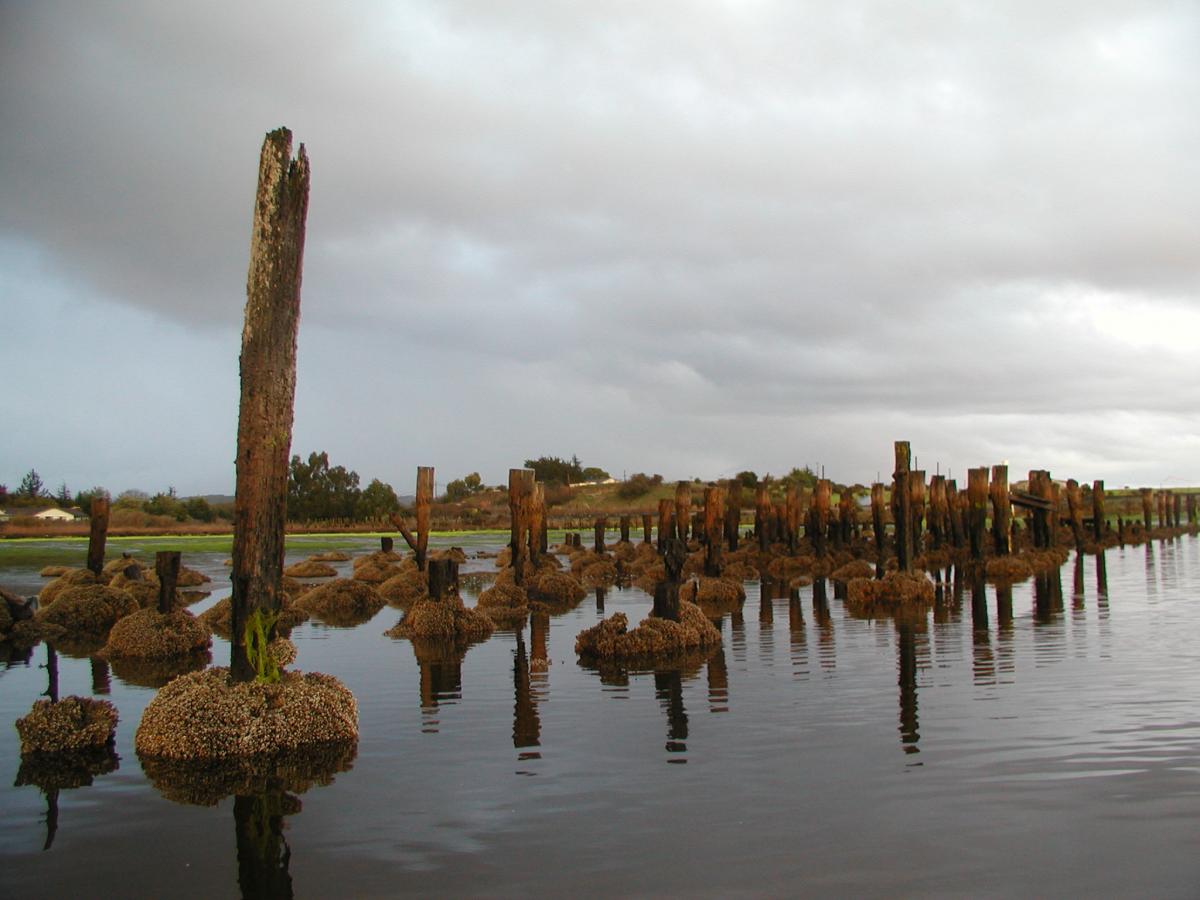
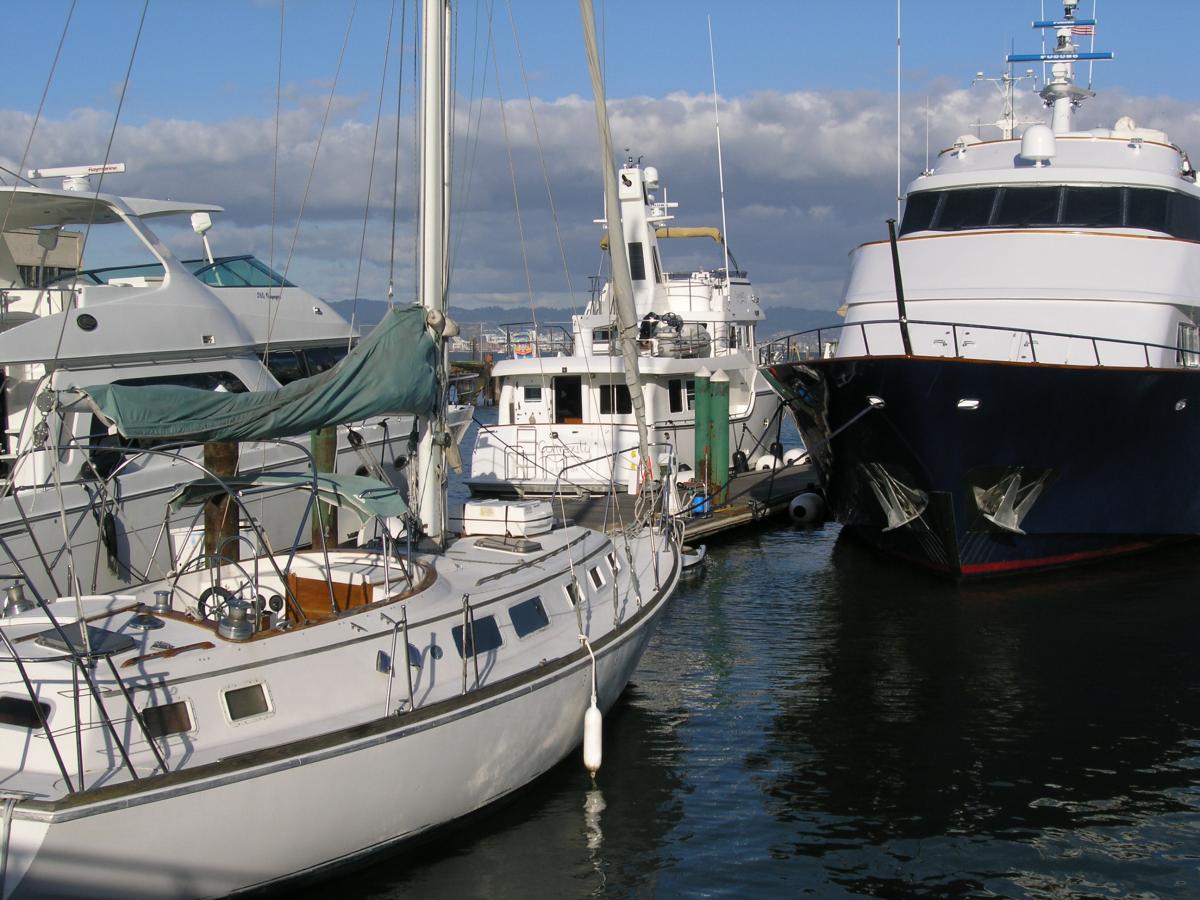
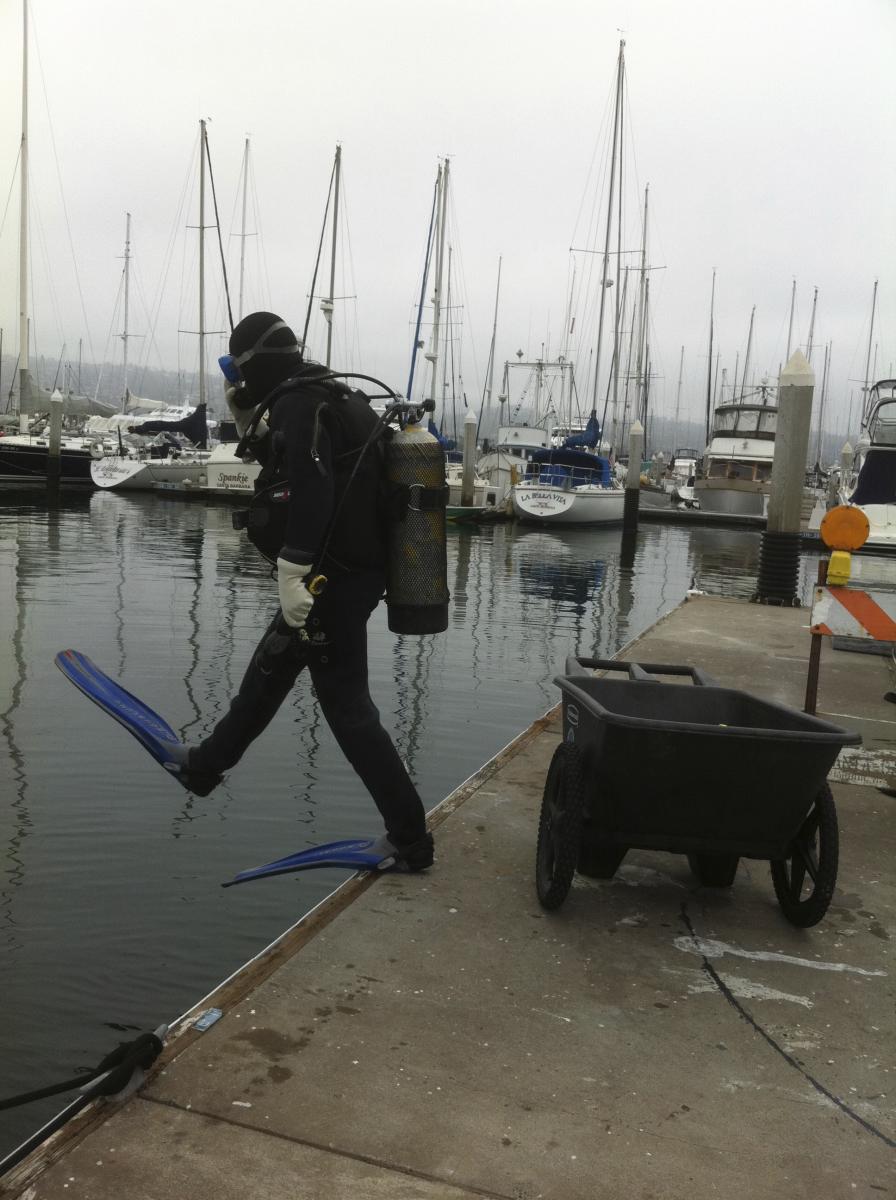
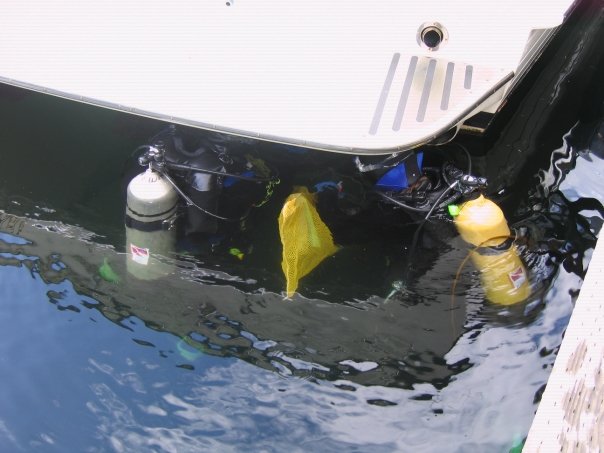
When we think of the introduction of marine species, ballast water, hull fouling and commercial ships are the first things that come to mind. But that’s only half the story. As Dr. Chela Zabin and her colleagues point out in their recent publication in Management of Biological Invasions, small boats may play a large role in the spread of introduced species brought over on the larger ocean-going vessels.
Dr. Zabin and co-authors Dr. Gail Ashton, Christopher Brown, Dr. Ian Davidson, Dr. Mark Sytsma, and Dr. Gregory Ruiz have been conducting research on biofouling for many years on small boats (recreational and fishing) and commercial ships (see October and November 2012 feature stories). In those years, they have compiled evidence suggesting linkages between bays with large commercial ports and smaller bays without commercial ports. Such evidence includes location of first establishment, limited ability of certain species to self-disperse, association with biofouling communities, and likelihood of transfer with recreational boats. For example, over half of the 290 nonnative marine species established along the West Coast of North America were first reported in San Francisco Bay. San Francisco Bay is heavily invaded and has several large international shipping ports. Many of these nonnative species are sessile (attached to a substrate) and do not have larval forms that could easily self-disperse to other bays. Many of these species are fouling species that can attach to boat hulls. Finally, they knew that a large number of recreational boats move between bays with large commercial ports and bays without a direct international link.
Dr. Zabin and her colleagues set out to test their hypothesis that small boats were transporting nonnative species from bays with large commercial ports (the source of many introduced marine species), to smaller bays without a direct overseas invasion pathway. To do this they selected four bays, one with large commercial shipping ports (San Francisco Bay) and three without (Bodega Bay, Half Moon Bay, and Monterey Bay). These bays were selected because they are the nearest coastal bays to the North (Bodega Bay) and South of San Francisco Bay. Within these outer coast bays, they selected the largest marinas to try to get the best estimate for boater traffic. Similarly, they selected three marinas in San Francisco Bay known to have active sailing communities in order to maximize data collection. They then set out to collect data on boater movements and hull condition (biofouling).
There are over a million boats registered on the West Coast from Washington to California. While it might be fair to assume that most recreational boaters probably stay close to home, there is actually very little information on the movements of recreational boats. There is no requirement that boaters record or report information about their travels within US waters; however, some of this information is collected by marinas as part of their guest moorage records. For example, a marina record might include the date of arrival, duration of visit, boat owner’s hometown/zip code, vessel type, and vessel size. A boat owner’s hometown could often be used to approximate a homeport or bay. The research team was able to collect records from some marinas going back two years (2008-2009). They also collected a total of 405 questionnaires directly from boaters at six marinas, three within San Francisco Bay and one in each of the smaller bays.
In addition to the boater surveys, they also collected data on the amount of hull fouling on some of these boats. Thirty-six of the 405 boaters who participated in the survey gave permission to survey their hulls using an underwater camera mounted on a pole. Using these videos and photographs the team was able to estimate the amount of biofouling by coarse taxonomic group (barnacle, tunicate, etc). The resolution was generally too low to identify species. In order to collect information about the species that were fouling some of these boats, the team got into their SCUBA gear and collected samples from 14 boats at two marinas, one in San Francisco Bay and one in Monterey Bay.
What was the connection between bays?
Using a combination of boater questionnaires and marina records, Dr. Zabin and her colleagues learned that most visitors to the outer coast marinas were from San Francisco Bay, CA, with a smattering of boaters arriving from other ports in California, other West Coast states/provinces, and even some from overseas. But boaters from San Francisco Bay dominated the data set (see map). Boater survey data also showed that boaters from the smaller bays visited San Francisco Bay frequently. These frequent visits connect San Francisco Bay to the small harbors to the North and South, creating a potential highway for newly introduced species to travel. The occasional overseas arrivals (<1%) to the coastal bays allowed for some chance of direct (initial) invasion, but these international travelers were so few compared with regional boat traffic that their impact was likely minor. Local recreational boaters seem to be the most important link between San Francisco Bay and the three smaller bays. The next step is to assess the usage of this highway by nonnative species.
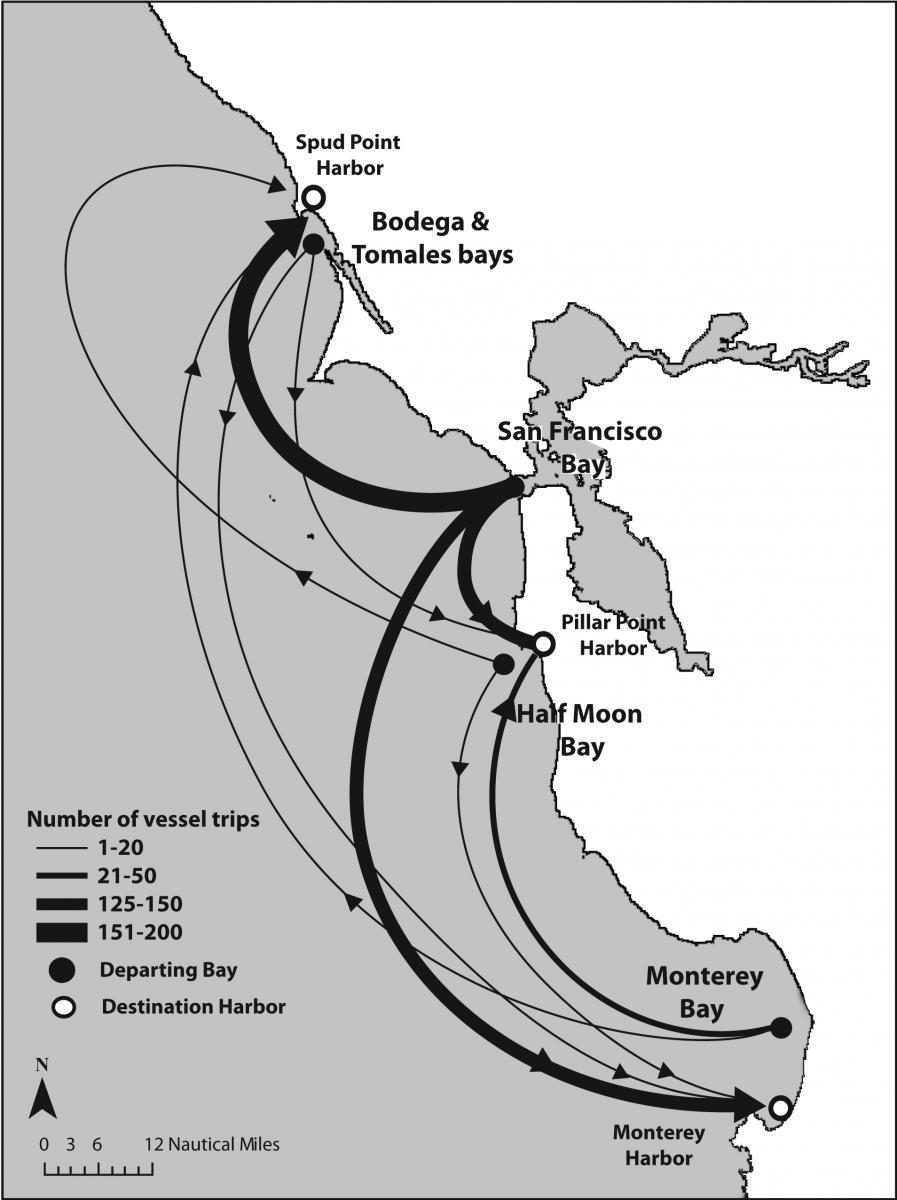
The extent of fouling varied widely; some boats were much better vehicles for invasion than others. A fouled boat is a costly boat to operate, so as expected, many boats had little to no fouling. However, only two boats were completely clean. Most had at least some fouling and some had diverse and abundant fouling communities. On average two species were found per boat hull and about three (average 2.8) were found on the appendages such as propellers, stern tubes, and struts. Most boats had biofilm and amphipods (~90%), and 30 to 40% had green algae. Other organisms like barnacles, coralline algae, sponges, mussels, tunicates, and bryozoans were more rare and found on less than 20% of the boats. The SCUBA team identified 27 species on 14 of the boats, at least seven of which are not native to California. Even with this small subsample, the team saw that recreational boats were providing an effective transport mechanism for nonnative species.
What are the implications of this study beyond these marinas?
This study took a detailed look at six marinas from four bays in California, but it’s likely that recreational boats are transporting nonnative species in this way around the world. Large international ports provide a direct connection for overseas transport of nonnative species, but small boats extend those connections to networks of marinas along coastlines and in local harbors. Thus, limited direct contact with overseas vessels does not mean protection from invasions.
The spread of nonnative species can magnify the impact as invaders become more widespread. For this reason, management of nonnative species should include reduction of secondary spread as well as on preventing initial invasions. Voluntary guidelines for hull cleaning are in place in some locations worldwide. So far, most of the focus for reducing invasions has been on preventing the initial invasion with little attention given to the secondary spread of species by smaller boats. Maintaining a clean hull serves to reduce fuel costs and also is a place where individual boat owners can make a difference in preventing the spread of nonnative species.
References
Zabin, C J, GV Ashton, CW Brown, IC Davidson, MD Sytsma and GM Ruiz. 2014. Small boats provide connectivity for nonindigenous marine species between a highly invaded international port and nearby coastal harbors. Management of Biological Invasions. 5(2): 97–112
doi: http://dx.doi.org/10.3391/mbi.2014.5.2.03



